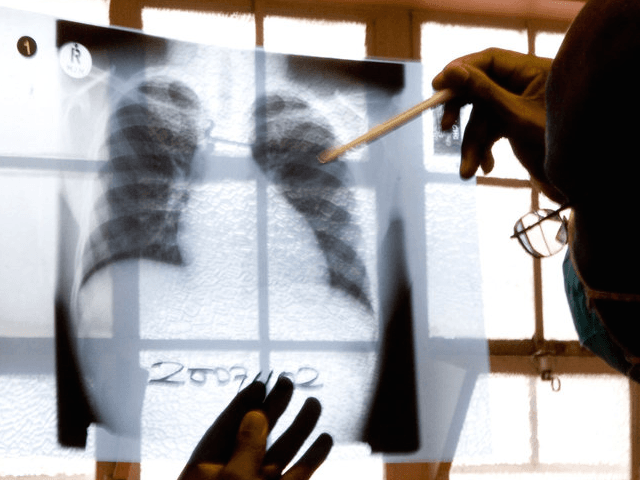An unidentified female patient with an extremely rare and drug-resistant form of tuberculosis is being treated at the National Institutes of Health (NIH), and authorities are reportedly attempting to track down hundreds of people who may have been in contact with her and exposed to the dangerous form tuberculosis.
According to an NBC report, the unidentified woman flew from India to the United States and “traveled to at least three states before she sought treatment from a U.S. doctor.” The patient was reportedly “isolated in a suburban Chicago hospital before she was sent to the NIH.”
“The patient traveled in April from India to the United States through Chicago O’Hare airport,” the CDC said in a statement to NBC. “The patient also spent time in Missouri and Tennessee. Seven weeks after arriving in the United States, the patient sought treatment for and was diagnosed with active TB.”
The CDC said it “will obtain the passenger manifest for that flight from the airline and will begin a contact investigation.” The agency said that though “the risk of getting a contagious disease on an airplane is low, public health officers sometimes need to find and alert travelers who may have been exposed to an ill passenger.”
But the unidentified woman does not have a normal case of tuberculosis.
She has what is known as XDR-TB (extensively drug-resistant tuberculosis), which is so rare and dangerous that the CDC reportedly “got reports of 63 cases between 1993 and 2011” and “only about a third to half of cases can even be cured.”
Though ordinary TB is “hard to treat and requires, at a minimum, weeks of antibiotics,” XDR-TB “resists the effects of almost all the known TB drugs” and patients sometimes “have to have pockets of infection surgically removed.” In fact, XDR-TB is reportedly “so dangerous that health officials will have to make a concerted effort to warn anyone who may be at risk.”
According to the CDC, “TB bacteria are put into the air when a person with TB disease of the lungs or throat coughs, sneezes, shouts, or sings,” and “these bacteria can float in the air for several hours, depending on the environment. Persons who breathe in the air containing these TB bacteria can become infected.”
The NIH said that “the patient was transferred to the NIA via special air and ground ambulances” and is staying in an isolation room that is “specifically designed for handling patients with respiratory infections, including XDR-TB.” The special isolation rooms reportedly “control air flow to prevent germs from escaping into the rest of the hospital or outside.”
The woman reportedly “may face months or even years of treatment,” and, according to NBC, “the average cost of treating multidrug-resistant TB is $134,000, compared to $17,000 for a normal case.” The cost can even “shoot up to $430,000 for an extensively resistant case.” NBC noted that it is not yet clear at the moment who will pay for the patient’s extensive treatment.

COMMENTS
Please let us know if you're having issues with commenting.